Mohit Gundecha, Director, Business Development and Head, India Operations, mig33 said: “While the world was shifting from accessing internet on PC to mobile, a class of users leapfrogged the PC and jumped directly to the mobile. These users had little exposure of internet while PC was an expensive tool. However cheaper handsets, low cost data plans enabled information gateway for them and the small screen became their PC, and thereby emerged the mobile-first user. There is a rapidly growing mobile-first community in India, Indonesia, Bangladesh, Nepal, South Africa, and South East Asia, which have a definitive set of behavioural patterns that mig33 expounds via the report.”
The methodology used was from mig33 user base. A random selection of users from tier 1, tier 2 and tier 3 cities was made, and surveyed for their social media interests, mobile networking, spending on mobile phone. Every user was asked a set of 10 questions, and results were analysed to understand the trends emerging from various categories. The primary research was done with about 360 respondents from following categories via interviews during Jan – Feb 2011
Tier 1/Metro – Mumbai, Delhi, Chennai, Kolkata, Hyderabad, Bangalore, Pune, Ahmedabad
Tier 2 – Indore, Bhopal, Jaipur, Chandigarh, Lucknow, Patna, Cochin, Surat, Baroda, Kanpur
Tier 3/Others – Bharuch, Gwalior, Allahabad, Ajmer, Madurai, Mysore, Belgaum, Rajkot, Ludhiana, Amritsar
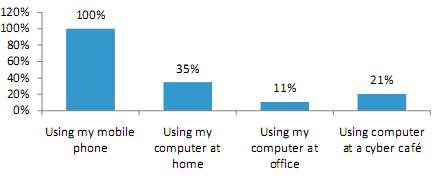
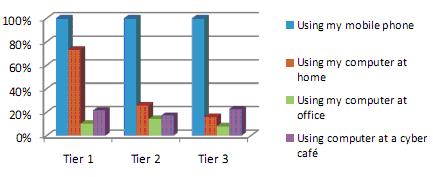
The survey resulted that 68% of mobile first users in tier 3 cities log on to social media to make new friends and chat with strangers, while only 41% of mobile first users in tier cities do so. Only 43% of users in tier 3 cities connect with their real life friends on social media, while in tier 1 cities, 92% of users do so. Essentially, social networking in tier 2 and 3 towns is more about entertainment and making new friends as opposed to tier 1 cities where it is about being in league with majority of friends. For the mobile-first community, social network is a companion rather than a place to meet companions.
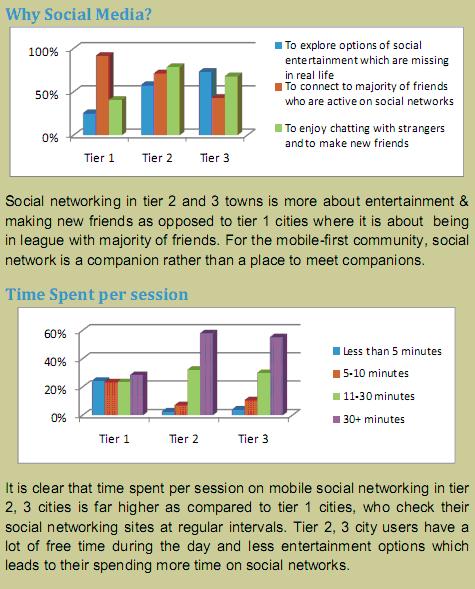
More than 50% users spend over 30 minutes for every session, while only 9% spend less than 5 minutes per session. As the survey suggests, users in tier 2 cities seem the most hooked with 58% of users spending 30+ minutes per session.
In a virtual world users try and impress the opposite gender by virtual gifting. In fact users also feel that virtual gifting helps them save costs on real gifts. 30% of mobile-first users in tier 3 towns also show off their spending capacity in a virtual world. Love/Dating virtual items are most popular across all the cities. 69% of the users spend on virtual gifts that cost less than Rs. 15. Such gifts usually include – a hug, a kiss etc. In fact in tier 2 cities, 40% of the users spend on gifts that cost between Rs.5 and Rs.15.
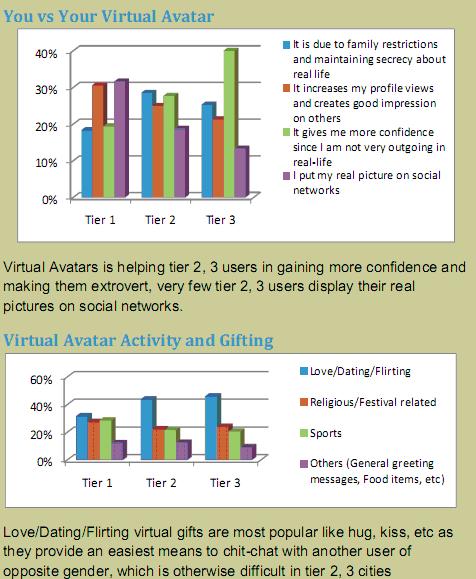
34% of the mobile-first users play social games to earn credit points and enhance their social reputation, while 29% play to compete with their friends.
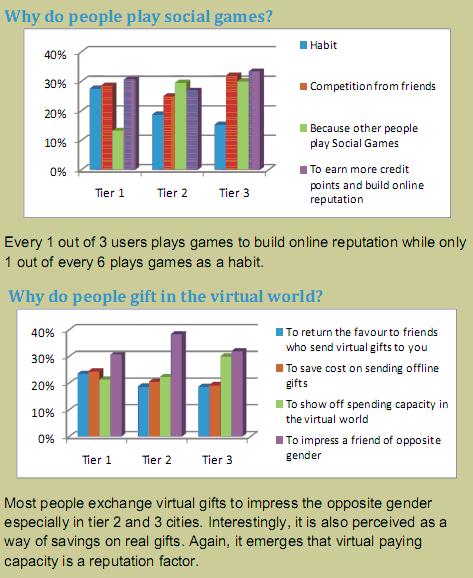
Almost 55% of mobile-first users prefer sub Rs. 50 GPRS plans. Daily GPRS plans like Rs 5 for 2 days are popular. In fact in tier 2 and 3 cities, more than 60% of users buy such plans.
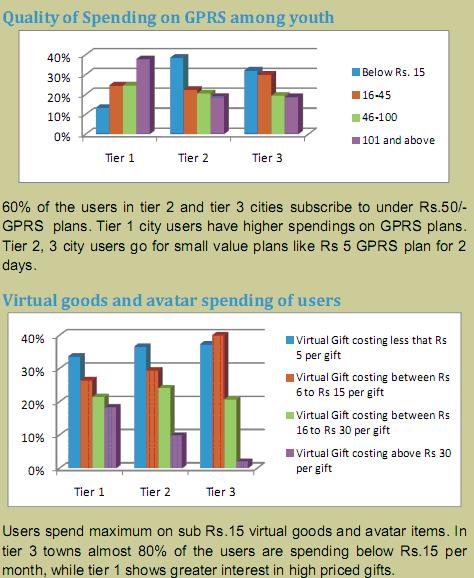
Orkut has an active user base even today from tier 2 and tier 3 cities. Although, 92% of the mobile-first community in tier 1 cities is also on Facebook, in tier 3 cities, this falls to only 48%. This also signifies that mig33 and Orkut may be filling different gaps of their social life.
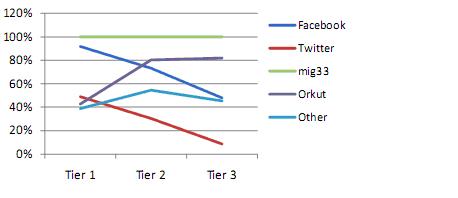
44% of the mobile-first community tries to save money from daily activities such as public transport, canteen, mobile calling to spend money on social network, more so in tier 2 and tier 3 cities.
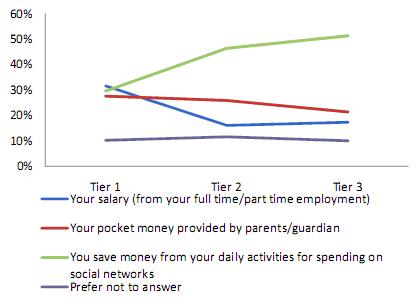
As for the results, the mobile-first survey explored underlying factors that make this social being, the reasons for exchanging virtual gifts, or buying avatar items. The survey was conducted to curb curiousness and seek answers
to fundamental questions about the mobile internet growth in India.
mig33, which is a mobile social networking platform, adds a new perspective to social networking in India. The survey comes up with interesting results and will help the industry to understand the non-metro mobile subscribers.
